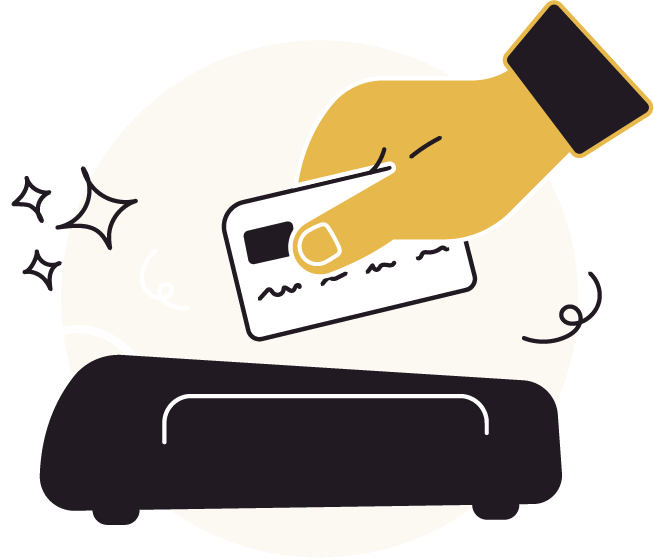Restaurant Financing Guide
inKind Capital a Better Alternative to Conventional Restaurant Loans
It used to be that if you wanted to open a restaurant, you could walk into your local bank, meet with a lending officer and get your loan. Today, obtaining restaurant loans from banks is more complex, and involves unique risks for restaurant operators.
Banks loans follow a one-size-fits-all approach -- every business that receives a loan has to pay back the principle plus interest. The interest rate varies on the risk profile of the business. For restaurant owners, banks consider restaurants of higher risk and usually only lend to existing restaurants if they are profitable. Whils banks can be great sources of capital for some, their lending model doesn't take into account specific challenges that restaurants face, such as seasonality and thin cash flow margins.
If you are looking for alternative restaurant financing options, consider inKind Capital's innovative restaurant financing model. inKind was developed by operators, for operators and takes into account the unique challenges that restaurants face by providing capital in exchange for food & beverage credit. Unlike a loan, restaurant operators don't have to pay inKind back which frees up cash flow. Additionally, inKind's funding is debt-free and non-dilutive, and includes marketing support that drives new, loyal, high-spending guests through your restaurant's doors.
Read on to learn more about restaurant loans and how inKind Capital's financing model compares to conventional sources of restaurant financing.
If you are looking for alternative restaurant financing options, consider inKind Capital's innovative restaurant financing model. inKind was developed by operators, for operators and takes into account the unique challenges that restaurants face by providing capital in exchange for food & beverage credit. Unlike a loan, restaurant operators don't have to pay inKind back which frees up cash flow. Additionally, inKind's funding is debt-free and non-dilutive, and includes marketing support that drives new, loyal, high-spending guests through your restaurant's doors.
Read on to learn more about restaurant loans and how inKind Capital's financing model compares to conventional sources of restaurant financing.
In this guide
What Are Conventional Restaurant Loans?
Conventional restaurant loans provide upfront capital in exchange for full repayment plus interest over time. In general, banks have the lowest interest rate of any lender but also have the least risk tolerance. Because banks consider restaurants to be high-risk, interest rates can be especially high when lending to restaurants. To mitigate these risks, banks often require pledging of assets to collatoralize the loan and a personal guarantee from the operator. The process for getting a bank loan can be cumbersome – comprehensive applications lead to long approval times and, for restaurant operators, often result in unfavorable terms or an eventual decline of the application.
The Most Common Types of Restaurant Loans
Conventional Bank Loans
Conventional bank loans from restaurants occur when the bank assumes the full risk of the loan. With conventional loans, there are no set limits and loans can be approved quickly compared to SBA loans. There is often a time-in-business requirement (6+ months) and a minimum credit score to be eligible.
Advantages to Conventional Bank Loans
- Faster approval than SBA loan
- Fixed-payment terms and low-cost financing
- Flexible terms (3 to 10 years) available.
Disadvantages to Conventional Bank Loans
- Personal guarantees typically required
- Excellent credit usually required
- Paperwork intensive
- Collateral often required.
Small Business Association Loans
The Small Business Administration is a US government agency that partners with SBA-approved lenders for small businesses that do not qualify for conventional bank loans. The SBA shares risk with the bank by guaranteeing a portion of the loan. This allows for small businesses, and even startups with limited operating history, to be eligible for SBA-backed loans. Two advantages of an SBA loan are that they generally have longer repayment terms and a lower interest rate than conventional bank loans.
Advantages to SBA Loans
- Lower interest rates than conventional bank loans
- $5.5 Million lending limit
- Long-term (25 year) loans available.
Disadvantages to SBA Loans
- Lengthy approval process
- Paperwork intensive
- Personal guarantees are often required.
Challenges Restaurants Encounter with Restaurant Loans
Restaurants face unique challenges when trying to obtain loans. Compared to other businesses, restaurants have to contend with their status of being a higher-risk investments, seasonal cash flows, and thin profit margins.
Restaurants are Perceived as Risky
Many banks and lenders perceive restaurants as risky investments or businesses. There are complicated reasons for this, but the primary reason is historically 30% of restaurants fail within the first year. Whatever the cause, lenders take this risk into consideration when operators apply for loans.
Restaurants Experience Seasonal Cash Flow
Many businesses have seasonal cash flow, but the restaurant industry is especially prone to seasonality. Generally speaking, restaurants experience less traffic during the early months of the year, peak during the summer months, and have a lull in the winter months outside of the holidays. This seasonality means restaurants have less cash on hand during the low points, making paying back loans or keeping the business profitable a struggle.
Restaurants Have Thin Profit Margins
Restaurants operate on thin profit margins. Even the best restaurants in the country still struggle with profit margins. Labor costs, rent increases, inflation and fluctuating food prices are a few of the factors that erode profitability. Lenders perceive thin profit margins as a risk to an operator's ability to pay back the loan on schedule.
What is inKind Capital Financing?
inKind Capital is a restaurant financing company that can be an alternative or complementary to bank financing. inKind understands that restaurants often don't generate enough cash to qualify for a bank loan, and if they do, that bank loans can be a risky source of funding. inKind is different because it was founded by restaurant operators, for operators. inKind does not provide loans like banks and operators are not required to pay back a loan or give up equity ownership. Instead, inKind provides capital in exchange for food & beverage credit, and then sells the credit to consumers.
Restaurants receive funding at the lowest cost of capital available, plus marketing support that drives more customer visits. Consumers receive monetary bonuses to spend at inKind partner restaurants plus additional dining perks. It's a win-win model for operators and consumers.
Restaurants receive funding at the lowest cost of capital available, plus marketing support that drives more customer visits. Consumers receive monetary bonuses to spend at inKind partner restaurants plus additional dining perks. It's a win-win model for operators and consumers.
How The inKind Financing Model Works

inKind provides funding by purchasing food & beverage credit to your restaurant.

inKind sells the F&B credit to guests on the inKind app. Guests receive a bonus to spend more.

inKind sends guests to your restaurant. Guests who use inKind visit more often and spend more per visit.
inKind Capital VS Conventional Bank Loans
With bank loans, operators need to take a portion of their profits to pay back a loan plus interest – with thin profit margins, many operators simply cannot afford to make these payments. inKind's financing model helps operators obtain the two ingredients which they need to grow – affordable capital and more customer visits.
- Created by operators, for operators.
- Offers the lowest cost capital to restaurants.
- No sacrificing ownership
- No debt accrued
- Focused on building sustainable profitability for restaurants
Bottom Line
For restaurant operators who qualify, obtaining a restaurant loan from a bank can be a cumbersome and risky approach to securing capital. Ultimately, bank loans aren't designed to accommodate the unique challenges of restaurant operations. With inKind Capital financing, your restaurant can obtain debt-free, equity-free capital that drives new, loyal, high-spending guests through your doors.
Get in touch
How can inKind take your restaurant(s) to the next level? Let's chat.
Ready to learn more?

